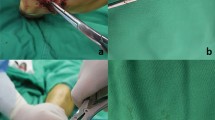Abstract
Since the optimal incubation period of cultures for diagnosis of bone and joint infections is still a matter of debate, the present study aimed to evaluate the effects of different incubation periods (5 and 15 days) on microbial isolation. Samples from 387 patients with bone and joint infections (including prosthetic ones) were analyzed from March 2012 to February 2014. In 197 patients (51 %) growth was obtained within 48 hrs, while in 124 (32 %) and 66 (17 %) patients cultures yielded positive results within and after 5 days of incubation, respectively. Of 449 microorganisms isolated, 247 grew within 48 hrs, 131 within the first 5 days of incubation while 71 were isolated after 5 days. Staphylococcus aureus was the most frequently isolated pathogen within 48 hrs, while Propionibacteria were prevalently isolated after 5 days of incubation. Interestingly, about 25 % of microorganisms isolated after 5 days of incubation were coagulase-negative staphylococci. Extending incubation period of broth cultures improves isolation rates of pathogens involved in bone and joint infections thus improving management of these infections.
Similar content being viewed by others
References
Marín M, Esteban J, Meseguer MA, Sánchez-Somolinos M (2010) Microbiological diagnosis of bone-joint infections. Enferm Infecc Microbiol Clin 28:534–540
Mitha A, Boulyana M, Hue V, Pruvost I, Martinot A, European French-speaking expert group, Dubos F (2012) Consensus in diagnostic definitions for bone or joint infections in children by a Delphi method with European French-speaking experts. Acta Paediatr 101:350–356
Rak M, Barlič-Maganja D, Kavčič M, Trebše R, Cor A (2013) Comparison of molecular and culture method in diagnosis of prosthetic joint infection. FEMS Microbiol Lett 343:42–48
Larsen LH, Lange J, Xu Y, Schønheyder HC (1995) Optimizing culture methods for diagnosis of prosthetic joint infections: a summary of modifications and improvements reported since 1995. J Med Microbiol 61:309–316
Esteban J, Alvarez-Alvarez B, Blanco A, Fernández-Roblas R, Gadea I, Garcia-Cañete J, Sandoval E, Valldazo M (2013) Prolonged incubation time does not increase sensitivity for the diagnosis of implant-related infection using samples prepared by sonication of the implants. Bone Joint J 95(Suppl 7):1001–1006
Thomson RB (2007) Specimen collection, transport, and processing: bacteriology. In: Murray PR, Baron EJ, Jorgensen JH, Landry ML, Pfaller MA (eds) Manual of clinical microbiology, 9th edn. ASM Press, Washington, pp 291–333
Butler-Wu SM, Burns EM, Pottinger PS, Magaret AS, Rakeman JL, Matsen FA III, Cookson BT (2011) Optimization of periprosthetic culture for diagnosis of Propionibacterium acnes prosthetic joint infection. J Clin Microbiol 49(Suppl 7):2490–2495
Schäfer P, Fink B, Sandow D, Margull A, Berger I, Frommelt L (2008) Prolonged bacterial culture to identify late periprosthetic joint infection: a promising strategy. Clin Infect Dis 47:1403–1409
Sendi P, Frei R, Maurer TB, Trampuz A, Zimmerli W, Graber P (2010) Escherichia coli variants in periprosthetic joint infection: diagnostic challenges with sessile bacteria and sonication. J Clin Microbiol 48:1720–1725
Parvizi J, Zmistowski B, Berbari EF, Bauer TW, Springer BD, Della Valle CJ, Garvin KL, Mont MA, Wongworawat MD, Zalavras CG (2011) New definition for periprosthetic joint infection: from the Workgroup of the Musculoskeletal Infection Society. Clin Orthop Relat Res 469:2992–2994
Musculoskeletal Infection Society (2013) International consensus on periprosthetic joint infection. http://www.msis-na.org/international-consensus/. Accessed 17 Nov 2014
Drago L, Signori V, De Vecchi E, Vassena C, Palazzi E, Cappelletti L, Romanò D, Romanò CL (2013) Use of dithiothreitol to improve the diagnosis of prosthetic joint infections. J Orthop Res 31:1694–1699
Kobayashi H, Oethinger M, Tuohy MJ, Procop GW, Bauer TW (2009) Improved detection of biofilm-formative bacteria by vortexing and sonication: a pilot study. Clin Orthop Relat Res 467:1360–1364
Levy PY, Fenollar F, Stein A, Borrione F, Cohen E, Lebail B, Raoult D (2008) Propionibacterium acnes postoperative shoulder arthritis: an emerging clinical entity. Clin Infect Dis 46:1884–1886
Cazanave C, Greenwood-Quaintance KE, Hanssen AD, Patel R (2012) Corynebacterium prosthetic joint infection. J Clin Microbiol 50:1518–1523
Hedke J, Skripitz R, Ellenrieder M, Frickmann H, Köller T, Podbielski A, Mittelmeier W (2012) Low-grade infection after a total knee arthroplasty caused by Actinomyces naeslundii. J Med Microbiol 61:1162–1164
Mougari F, Jacquier H, Berçot B, Hannouche D, Nizard R, Cambau E, Zadegan F (2012) Prosthetic knee arthritis due to Granulicatella adiacens after dental treatment. J Med Microbiol 62:1624–1627
Loïez C, Tavani F, Wallet F, Flahaut B, Senneville E, Girard J, Courcol RJ (2009) An unusual case of prosthetic joint infection due to Arcanobacterium bernardiae. J Med Microbiol 58:842–843
Reboli AC, Bryan CS, Farrar WE (1989) Bacteremia and infection of a hip prosthesis caused by Bacillus alvei. J Clin Microbiol 27:1395–1396
Hischebeth GT, Wimmer MD, Molitor E, Seifert H, Gravius S, Bekeredjian-Ding I (2015) Multidrug resistant Acinetobacter baumanii reaches a new frontier: prosthetic hip joint infection. Infection 43:95–97
Zurawski DV, Thompson MG, McQueary CN, Matalka MN, Sahl JW, Craft DW, Rasko DA (2012) Genome sequences of four divergent multidrug-resistant Acinetobacter baumannii strains isolated from patients with sepsis or osteomyelitis. J Bacteriol 194:1619–1620
Zeller V, Ghorbani A, Strady C, Leonard P, Mamoudy P, Desplaces N (2007) Propionibacterium acnes: an agent of prosthetic joint infection and colonization. J Infect 55:119–124
Morris AJ, Wilson SJ, Marx CE, Wilson ML, Mirrett S, Reller LB (1995) Clinical impact of bacteria and fungi recovered only from broth cultures. J Clin Microbiol 33(Suppl 1):161–165
Zimmerli W, Trampuz A, Ochsner PE (2004) Prosthetic joint infections. N Engl J Med 351:1645–1654
Drago L, De Vecchi E, Cappelletti L, Mattina R, Vassena C, Romanò CL (2014) Role and antimicrobial resistance of staphylococci involved in prosthetic joint infections. Int J Artif Organs 37:414–421
Conflict of interest
The authors declare that they have no conflict of interest.
Author information
Authors and Affiliations
Corresponding author
Rights and permissions
About this article
Cite this article
Drago, L., De Vecchi, E., Cappelletti, L. et al. Prolonging culture to 15 days improves bacterial detection in bone and joint infections. Eur J Clin Microbiol Infect Dis 34, 1809–1813 (2015). https://doi.org/10.1007/s10096-015-2416-8
Received:
Accepted:
Published:
Issue Date:
DOI: https://doi.org/10.1007/s10096-015-2416-8




